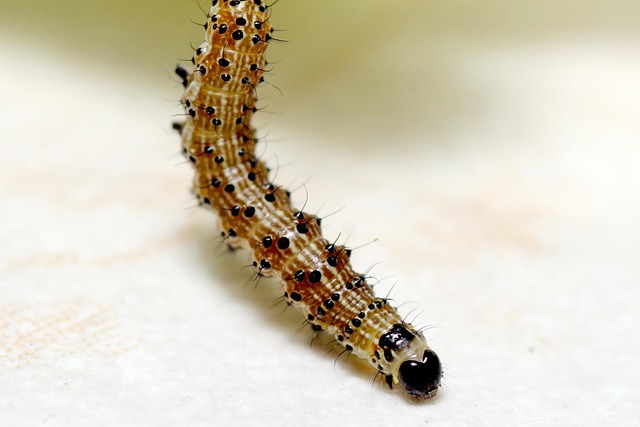Centipede pest control involves understanding their solitary hunting behavior and preference for dark, moist environments like basements and outdoor landscaping. Professional services use advanced technologies like thermal imaging cameras and motion-activated sensors for efficient detection and removal. AI aids in accurate species identification and targeted treatments, integrating with sensor systems to provide precise habitat data. IPM principles combine chemical and non-chemical methods for long-term success while maintaining a balanced ecosystem; regular monitoring and proactive management are crucial for effectiveness.
“Centipedes, though often overlooked, can transform homes into their bustling hideouts. This article explores advanced technologies revolutionizing centipede detection and removal, offering a modern approach to this ancient problem. From understanding centipede behavior to implementing cutting-edge solutions, we delve into effective strategies for centipede pest control.
We compare traditional methods with innovative tools like AI and sensor systems, providing a comprehensive guide to homeowners seeking efficient centipede management.”
Understanding Centipede Behavior and Habitat
Centipedes are elusive pests that prefer dark, moist environments, making them hard to spot until their presence becomes a problem. Understanding their behavior and habitat is crucial in effective centipede pest control. These creatures are solitary hunters, moving slowly and methodically through cracks, crevices, and under debris, seeking out insects and other small invertebrates to feed on. Their preference for humid areas like basements, crawl spaces, and outdoor landscaping makes them a common household nuisance.
Knowing where centipedes live helps in their removal. Professional pest control services often employ a combination of techniques, including sealing entry points, applying targeted pesticides, and using baits to disrupt centipede populations. Regular inspections and maintenance are vital to prevent reinfestations, as centipedes can travel significant distances to find food and suitable habitats within homes and commercial spaces.
Traditional Methods vs. Advanced Technologies for Detection
Centipede pest control has evolved significantly, shifting from traditional methods to advanced technologies for more efficient detection and removal. Manual inspections and chemical treatments have long been the go-to approaches but often prove ineffective due to the elusive nature of centipedes. These creatures are adept at hiding in hard-to-reach crevices and moist environments, making them difficult to pinpoint without extensive searching.
Advanced technologies, such as thermal imaging cameras and motion-activated sensors, offer a more sophisticated solution. Thermal imaging can detect temperature variations that indicate the presence of centipedes, allowing for quicker identification. Motion-activated devices trigger alerts when these pests traverse their paths, providing real-time data on centipede activity. This shift towards technology not only enhances centipede pest control but also offers a more targeted and environmentally friendly approach compared to traditional methods.
Innovative Tools: From AI to Sensor Systems
In the realm of centipede pest control, innovative tools powered by advanced technologies are transforming the way we manage and eliminate these pesky creatures. Artificial Intelligence (AI) is playing a significant role in detecting centipedes more accurately and efficiently. AI algorithms can analyze images and patterns to identify various species, helping professionals target their treatments effectively. This technology ensures that pest control measures are not only timely but also environmentally responsible.
Sensor systems have also emerged as powerful allies in the fight against centipedes. These sensors can detect even the faintest signs of these pests’ presence, such as specific chemicals they emit or subtle changes in temperature and humidity. By integrating sensor data with AI capabilities, professionals can create more precise maps of centipede habitats, enabling them to deploy targeted treatments that are tailored to specific locations. This advanced approach promises a future where centipede pest control is smarter, faster, and more effective than ever before.
Implementing and Maintaining Advanced Centipede Pest Control Solutions
Implementing advanced centipede pest control solutions involves a strategic approach that combines cutting-edge technology with expert knowledge. Modern methods, such as thermal imaging and motion-activated traps, enable precise identification of centipede habitats, ensuring targeted treatment without affecting non-target species. These technologies offer real-time data on centipede activity, helping professionals develop tailored strategies for effective removal.
Maintenance of these solutions requires regular monitoring and proactive management. Integrated pest management (IPM) principles, which integrate various control methods, ensure long-term success in centipede pest control. By combining chemical treatments with non-chemical alternatives like biological controls and habitat modification, IPM promotes a balanced ecosystem while effectively managing centipede populations. Regular inspections and quick response to new infestations are crucial for maintaining the effectiveness of these advanced solutions.
Advanced technologies offer a promising future for effective centipede pest control, revolutionizing the way we manage these intricate infestations. By combining innovative tools like AI and sensor systems with a deep understanding of centipede behavior, professionals can now detect and remove these pests more efficiently. Implementing these advanced solutions requires careful planning and maintenance to ensure long-term success in centipede management, providing a more sustainable approach to pest control for both residential and commercial settings.
